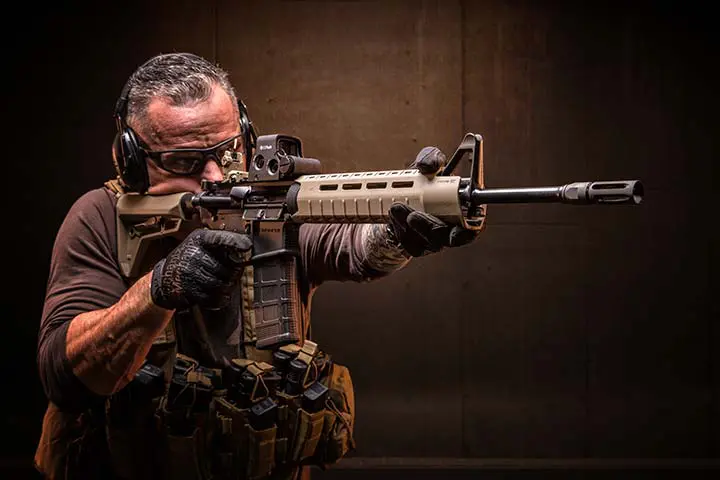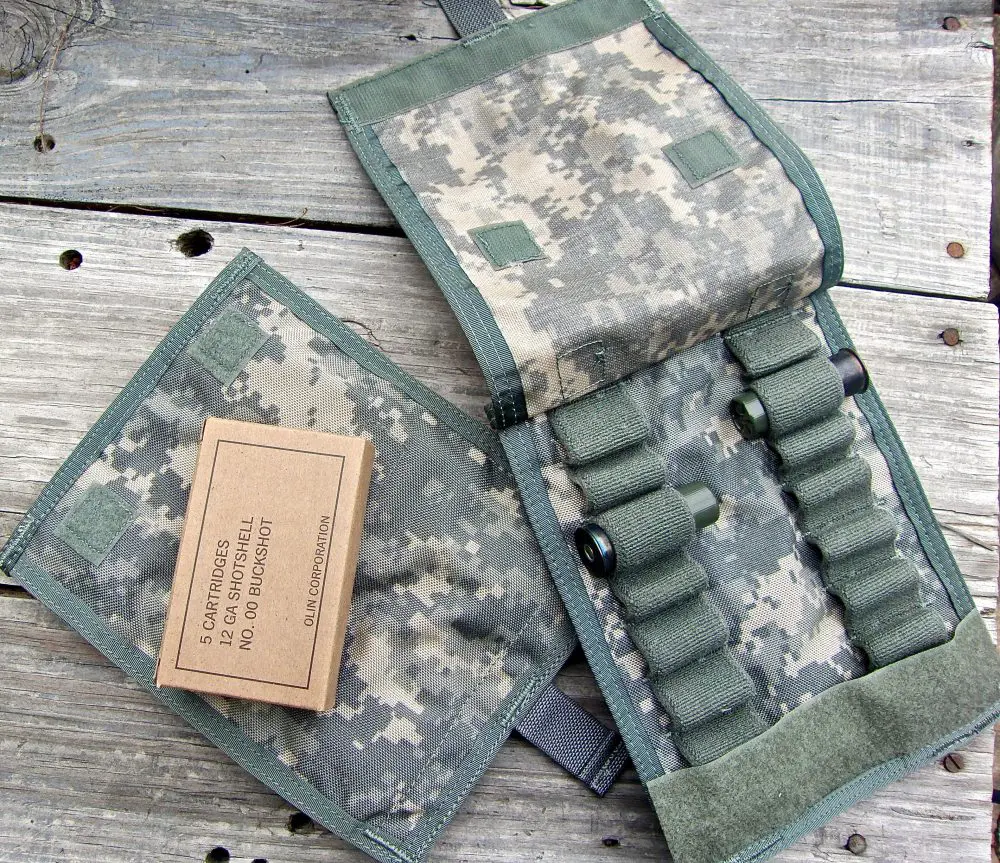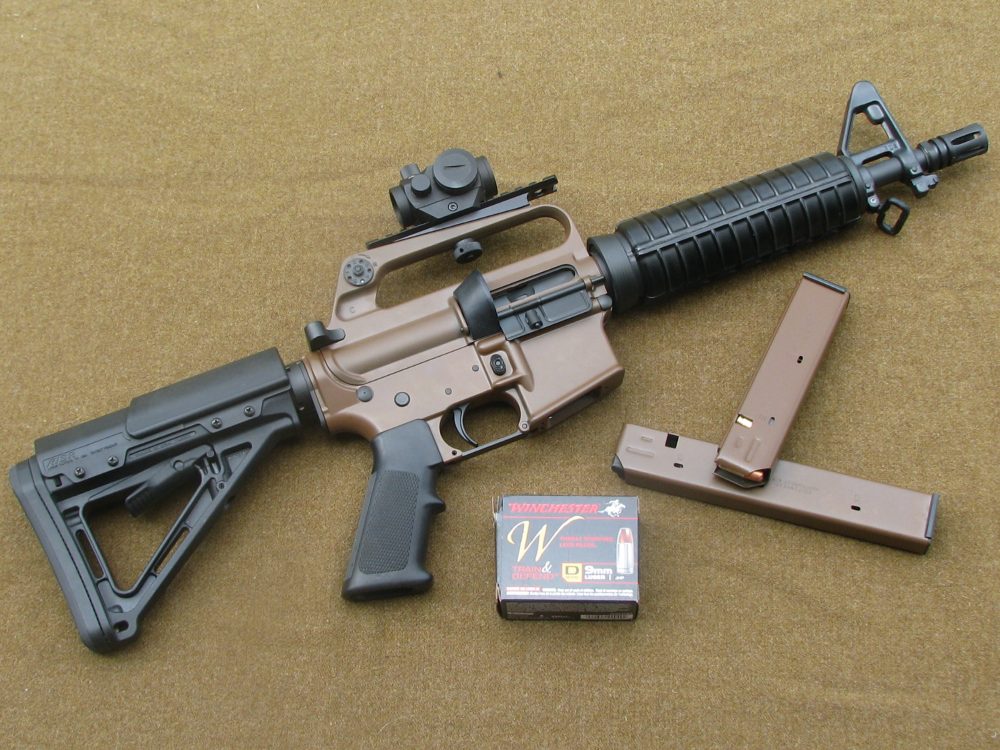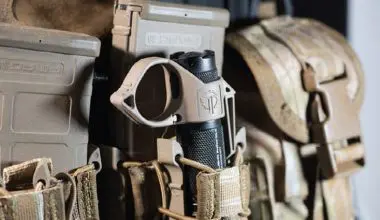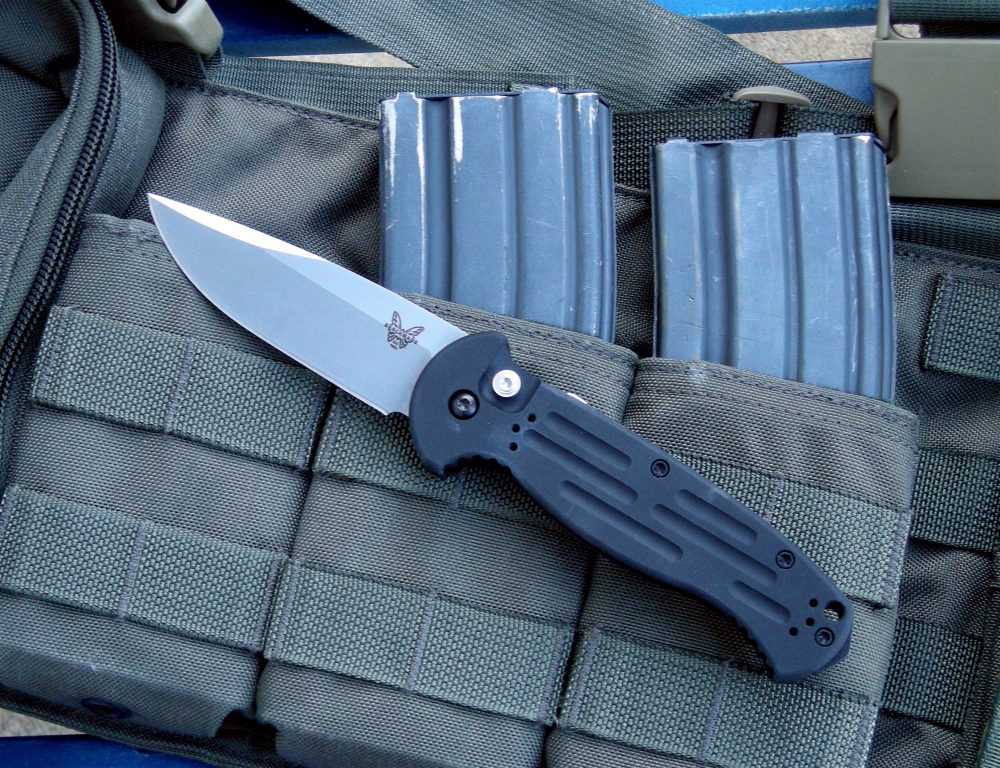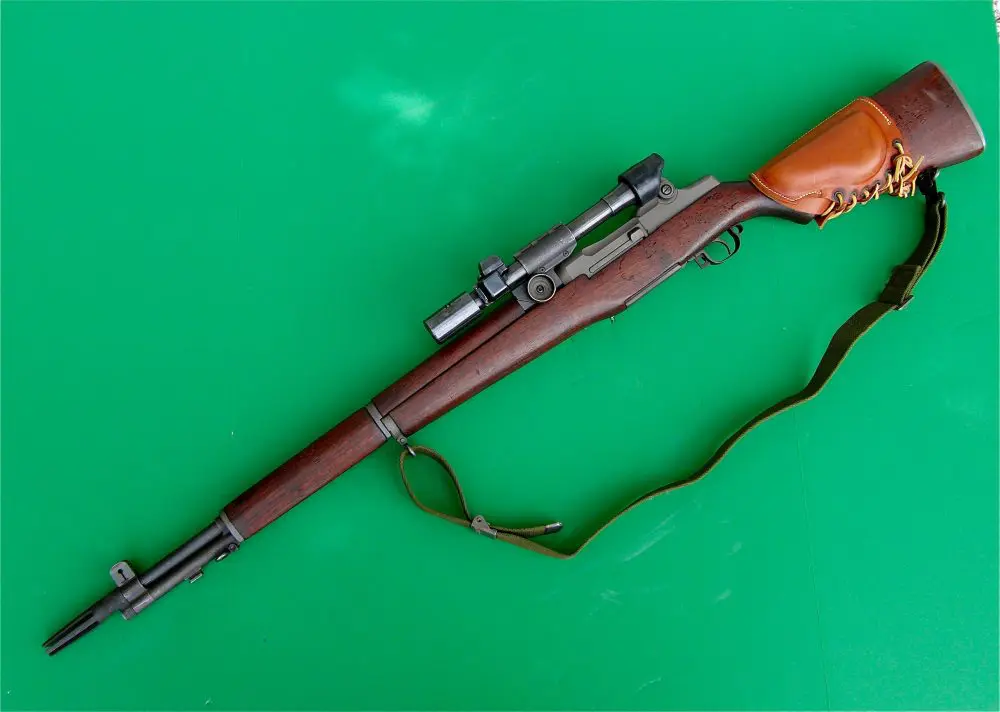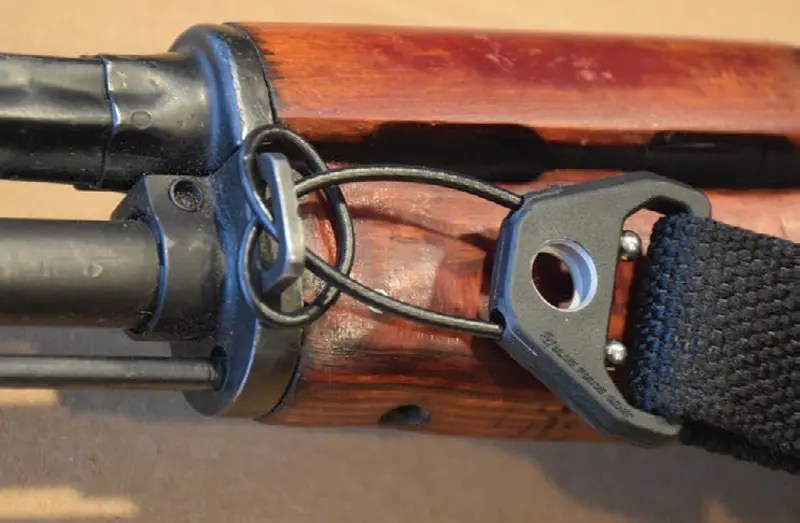
A sling is to a long gun as a holster is to a pistol—a means to carry the long gun when you are not actually using it. Originally made as a simple carry strap, several subsets have developed. The loop sling, best illustrated by the U.S. Military M1907 sling, was a carry strap first but was also a shooting aid. When properly adjusted, the sling steadied the shooter while in sitting, kneeling or prone. While heavy, complicated and requiring some training for use, it is still in use by High Power Rifle competitors.
Another type is the tactical sling, which may be a single-, two- or three-point sling, with the two point being the most common—and the most useful. The width of a military sling in the U.S. has been 1.25 inches pretty much since slings were standardized, though there are exceptions.
While the first sub-caliber machine guns in the U.S. inventory had 1.25-inch slings, the third and longest-serving submachine gun, the M3/M3A1, utilized the same one-inch sling as the U.S. Carbine Cal. 30 M1.
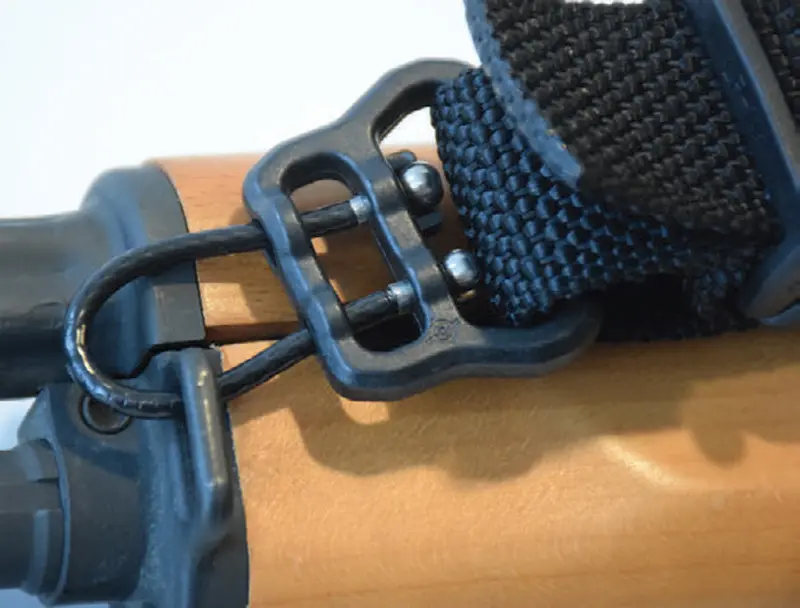
And for U.S. designed/made weapons, a 1.25-inch sling loop is used fore and aft. The rest of the world’s militaries see things somewhat differently, and the acceptance of foreign or foreign-designed weapons in our military means some compromises have to be made. They seem to like having the forward (and in some cases, the rear as well) sling attachment point as a small loop—some HK and FN products, for example.
These require a snap hook with a slot in the rear for the sling, and the hook to fit into the loop. Generally this is not a major issue, as long as you have the proper sling and hardware for the system. But it is a sloppy arrangement and not as secure as I would like.
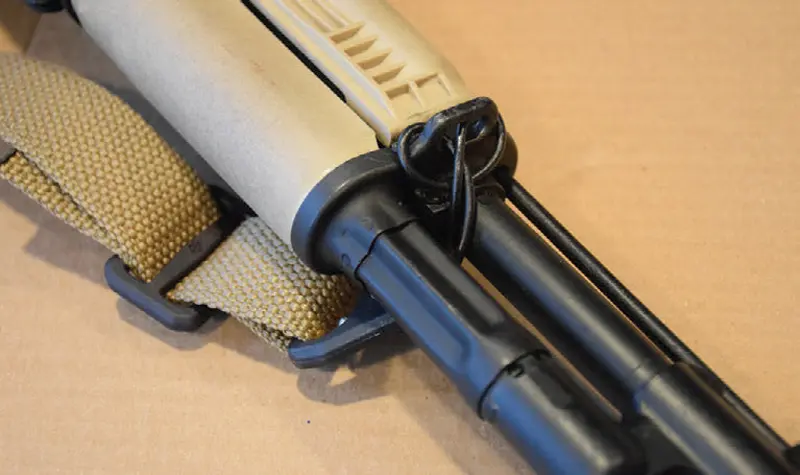
Table of Contents
AK WEAPONS AND SLINGS
Which leads to the reason for this article—the AK family of weapons. The AK has been around for a long time and is easily the most prolific firearm ever made. The popularity of the AK has nothing to do with its usefulness as much as it has to do with the desire of the former Soviet Union to foster revolution throughout the world. To enhance the overthrow of the Free World, they gave away loads of these guns to the Third through Sixth World locations that pass loosely as countries.
The AK has been in service in one form or another since 1949 and, while exact numbers are elusive, guesstimates indicate that somewhere between 75 and 100 million have been manufactured in a great number of countries—including the United States.
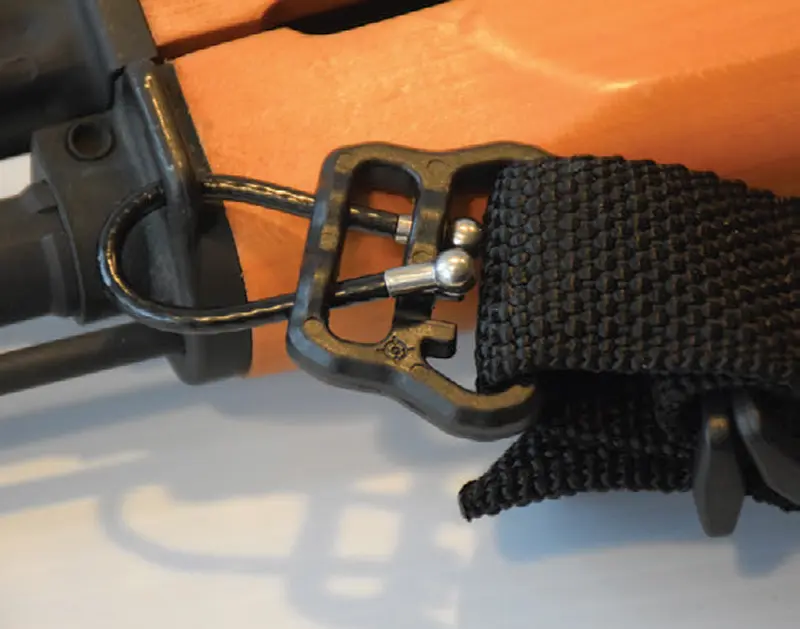
Be that as it may, the AK was designed at the end of World War II, and the design reflected both that time frame as well as the doctrine of the former Soviet Union. The purpose of the sling at that time was simply to carry the weapon, and the AK had a rear sling loop in the heel of the buttstock (with some exceptions), and the forward attachment was a .375-inch slot at the lower handguard retainer or on the gas block.
The Soviets, Non-Soviet Warsaw Pact Nations, and their satellites used a 1.25-inch cotton sling attached to the rear with an appropriate sling loop, and at the front a metal snap hook of one type or another. This fits their doctrine and has worked sufficiently well for them until relatively recently, when they gravitated to a lot of what the U.S. was using. There is some major-league irony at work here….
With the end of the Cold War, AKs went from being the gun of only the bad guys to the gun of some NATO partners and later of coalition allies. The AK was also used by several of the professional military companies, whose assistance in the ongoing war was and continues to be indispensable.
As a result, an AK metamorphosis has occurred over the years, where some countries, some companies (Rifle Dynamics and Krebs, for two), and many individuals have changed the lackluster ergonomics and poor sights into a more functional gun. This is considered by some to be an exercise in futility, but most others see the validity of it.
BATTLEFIELD PICK UP
My company, EAG Tactical, teaches Battlefield Pick Up courses utilizing the AK. The rationale for this class is that one may at some point be in possession of a terrorist’s weapon—which, worldwide, is the iconic AK-47. It may be that the good guy is unarmed and is able to access a downed bad guy’s gun, or perhaps because he is seeking a more capable weapon than the pistol he carries daily.
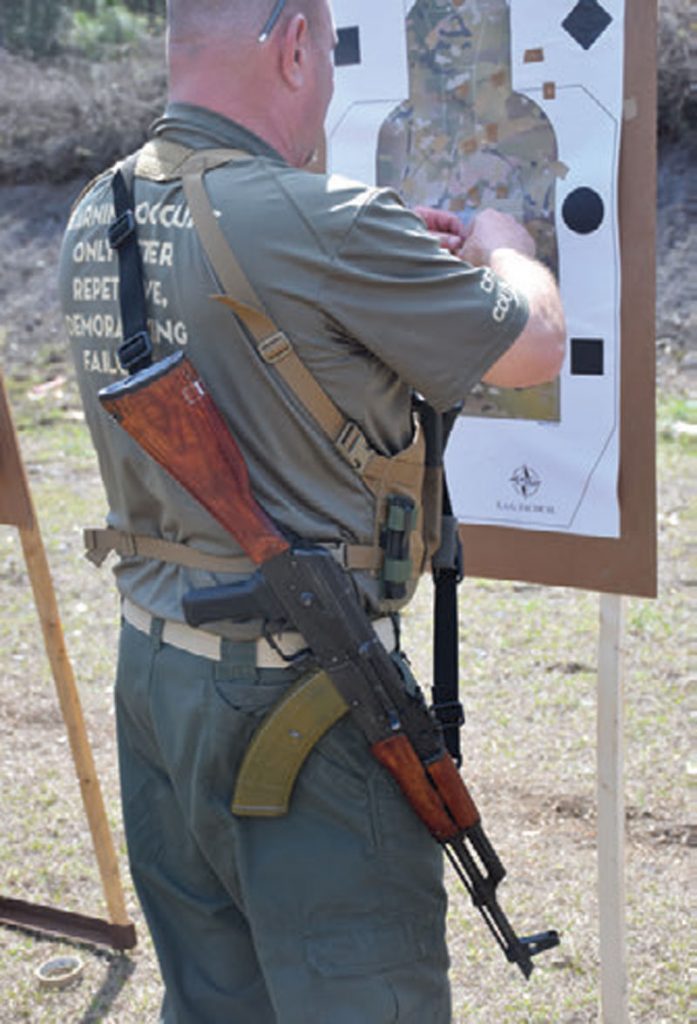
If this is the case, we strongly believe that everyone should at least have sufficient knowledge to run the gun, keep it running, and make the gun safe. We provide AKs for this class, and to that end we keep our student guns pretty much stock. This is historically what we have seen in terrorist incidents in the past, and probably what we will see for many more decades.
Our school guns are stock with two exceptions—magazines and slings. The first, magazines, is simply a logistical issue. Magazines are wear items that become damaged and fail over time. When milsurp AK mags were plentiful and cheap, you could be choosy as to what you used. Today that market is drying up, and all surplus magazines are not the same, just as all AKs are not the same.
Magazines are not forever items, and we don’t fall in love with them. Because of that, we run aftermarket polymer magazines in class—primarily Magpul, but also some U.S. PALM and other makers as we get them.
Slings are a bit different. While the issue AK sling is basically a carry strap, for safety reasons we prefer having a carry strap that can be used to both safely carry the gun administratively as well as run it when necessary. And because safety is paramount, we wanted to use a sling that can carry the gun efficiently but also allow the gun to be brought into action without removing it from the shooter’s shoulder.
“AMERICAN” AND “AFRICAN” CARRY
Years ago, I worked at a school that taught a system of “American” and “African” carry for rifles. While quaint and viable for some hunting endeavors, moving from carry to use was often accompanied by a lot of unnecessary movement and muzzle flagging. It became enough of an issue that at EAG we have forbidden the use of carry straps and both American and African carry.
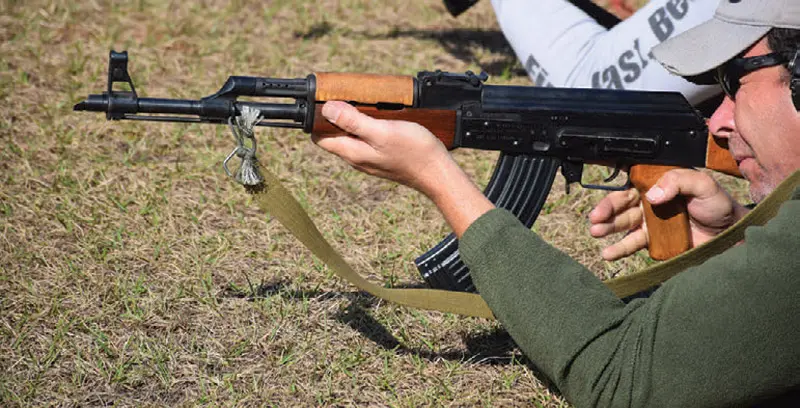
We are not running a secondary gun—a pistol—in these BFPU classes, so we aren’t worried about conflicting with the blaster. Therefore we prefer to run the AK in this class with the sling over the head and the strong-side arm through the sling, just the opposite of how we run it in a carbine class.
This puts the carbine out of the way and lessens the potential for flagging when bending over and performing administrative tasks. But we also prefer that they be able to bring the gun up on target without taking the sling off the shoulder. Herein lies the rub. We are all physically different. Because of our different body configurations, height, weight, girth, BMI and injuries, one sling does not fit all.
Issue AK slings are not exceptionally standard in length (or anything else). Looking at 25 issued AK slings from various countries, they are from 31 to 45 inches in maximum length, with most around 36 inches long. The one common trait is they are all difficult to adjust. What you have when you sling up is what you’re stuck with.
We also prefer a sling that is easily adjustable, so shooters can manipulate their weapons safely and efficiently—pretty much what is used for the M4 family of weapons.
BLUE FORCE GEAR STANDARD AK SLING
Understanding that terrorist weapons are more likely to have a garbage sling, I did not want to compromise on safety, so I replaced the issued mil sling with the Blue Force Gear (BFG) Standard AK sling (K-SP-0046). I chose it for use on our school guns for a number of reasons.
BFG is and has been an industry leader for many years. They are well known for their top-shelf designs as well as their quality control. What comes out the door is very much good to go, and they have been in the sling business for a long time.
In 2006, Ashley Burnsed designed the Vickers Combat Application Sling (VCAS), which in the military version (NSN: 1005-01-604-0627) the Marine Corps adopted in 2011 for the M27 Squad Automatic Rifle and authorized as the sole marksmanship/combat sling for the M16/M4 family of weapons. With a different attachment system, it has been selected for use by the USAF Security Forces. Over 200,000 of these slings are in use on military guns.
The BFG Standard AK sling is similar to the VCAS sling and can be adjusted from approximately 31 to 65 inches. That adjustment can be accomplished rapidly with a contrasting fabric tab on the front of the sling. Pull the tab toward you to tighten the sling, and away from you to loosen it. The substantial range of adjustment permits it to be used by folks of different size, using armor, or going slick. This eliminates both having to “make do” with the hard-to-adjust issue sling as well as the antics that occur when bringing the gun into play.
The Blue Force Gear Standard AK sling has two Tri Glides at the rear, giving the shooter the option of how they will attach the sling at the rear. You can thread the sling through the metal sling loop in the buttstock, but you can also loop the sling around the small of the stock or the back of the stock.
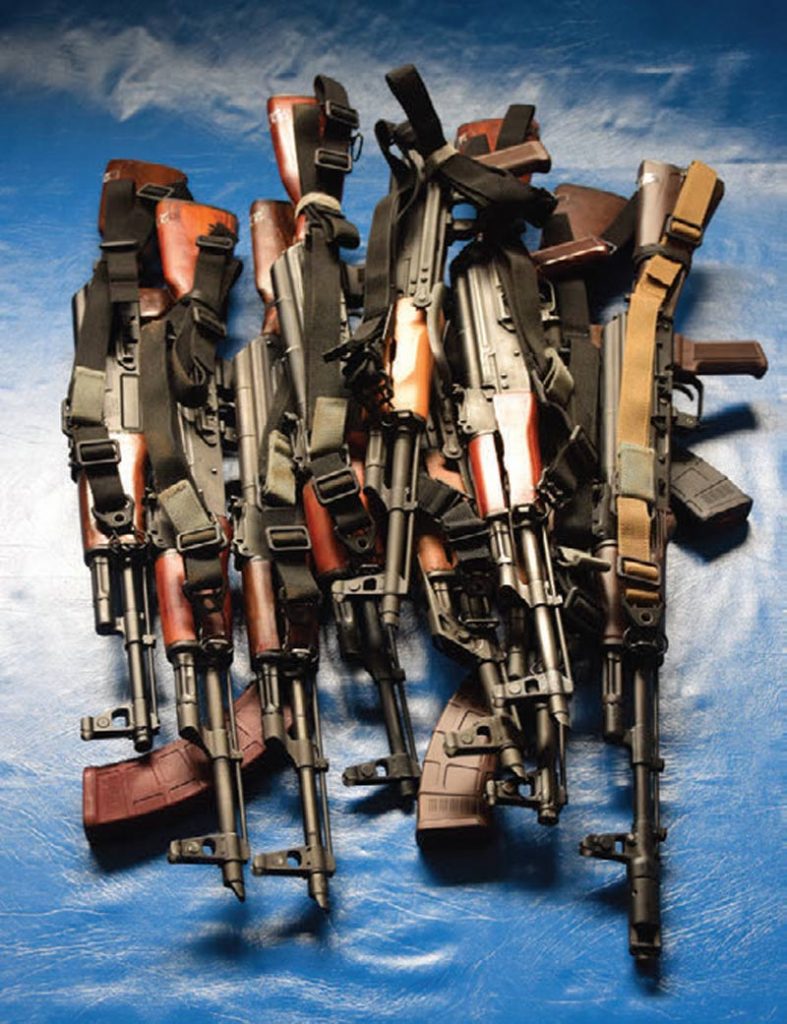
The front attachment point on the AK has been an aggravating issue for some, to include me. The small aperture means you have to use a narrow strap (in some cases, leather) and/or a snaplink/hook. The hook can be a weak link, and we have seen enough failures with them to understand that in this day and age, we should be able to do better.
UNIVERSAL WIRE LOOP
To rectify this, BFG came out with a Universal Wire Loop (UWL) (NSN-1005-01-613-5784) as a multi-purpose sling attachment point. It consists of the 6061 T6 aluminum body, which the sling is looped through, and a nylon-coated stainless steel aircraft-grade cable that is installed with ball-shank ends. It comes in two lengths: 3.25 and 6.25 inches.
The UWL can be attached almost anyplace on the gun by inserting the loop through the attachment point and then inserting the body through the open loop. Attach the sling of your choice to the body and you’re good to go.
The Standard AK Sling comes with the similar Molded Universal Wire Loop with Push Button Socket (UWL-PB-P-275). This unit is like the Universal Wire Loop, but as the name says, a push-button socket is milled into it. This socket accepts the push-button quick-release studs, and since many slings utilize push-button sling studs, it makes life easier for them.
The UWL can attach to the host gun in a variety of ways, including the sling attachment point, around the barrel, or through slots in the rail interface system. We have used scores of these UWLs to backfit the guns of students who arrive at our carbine classes with sub-par slings and attachments. The UWL may be one of the most useful items we bring to class, and bonus points for the fact that it is ambidextrous.
It’s hard to believe that something as simple as the UWL can be improved, but it has been. A follow-on wire loop is the newly released Blue Force Gear Uber Loop, or ULoop (UWL-UL1).
BFG UBER LOOP
The ULoop is a much smaller, sleeker, and easier to attach UWL. Instead of having the cable molded into the loop as in the UWL, the ULoop has one side that is releasable, enabling you to place it rapidly where it is needed. The ballshank is then replaced into its slot and pressed down to lock it in. One big benefit is that the sling does not have to be removed from the ULoop in order to attach it to the host. While it may not be a major issue for one person attaching one sling, consider when you have to do a platoon’s worth.
The Universal Wire Loop was a step forward. The Uber Loop is a major step forward, and it will eventually replace the UWL on these slings. Blue Force Gear is nothing if not forward thinking.
With the exception of exigent circumstances, we don’t acquire anything unless we either have a lot of hands-on time with it, or we have seen large numbers in the hands of students over the long term. Our decision to use the Standard AK sling was based on a lot of these inputs, and we are extremely satisfied with it.
